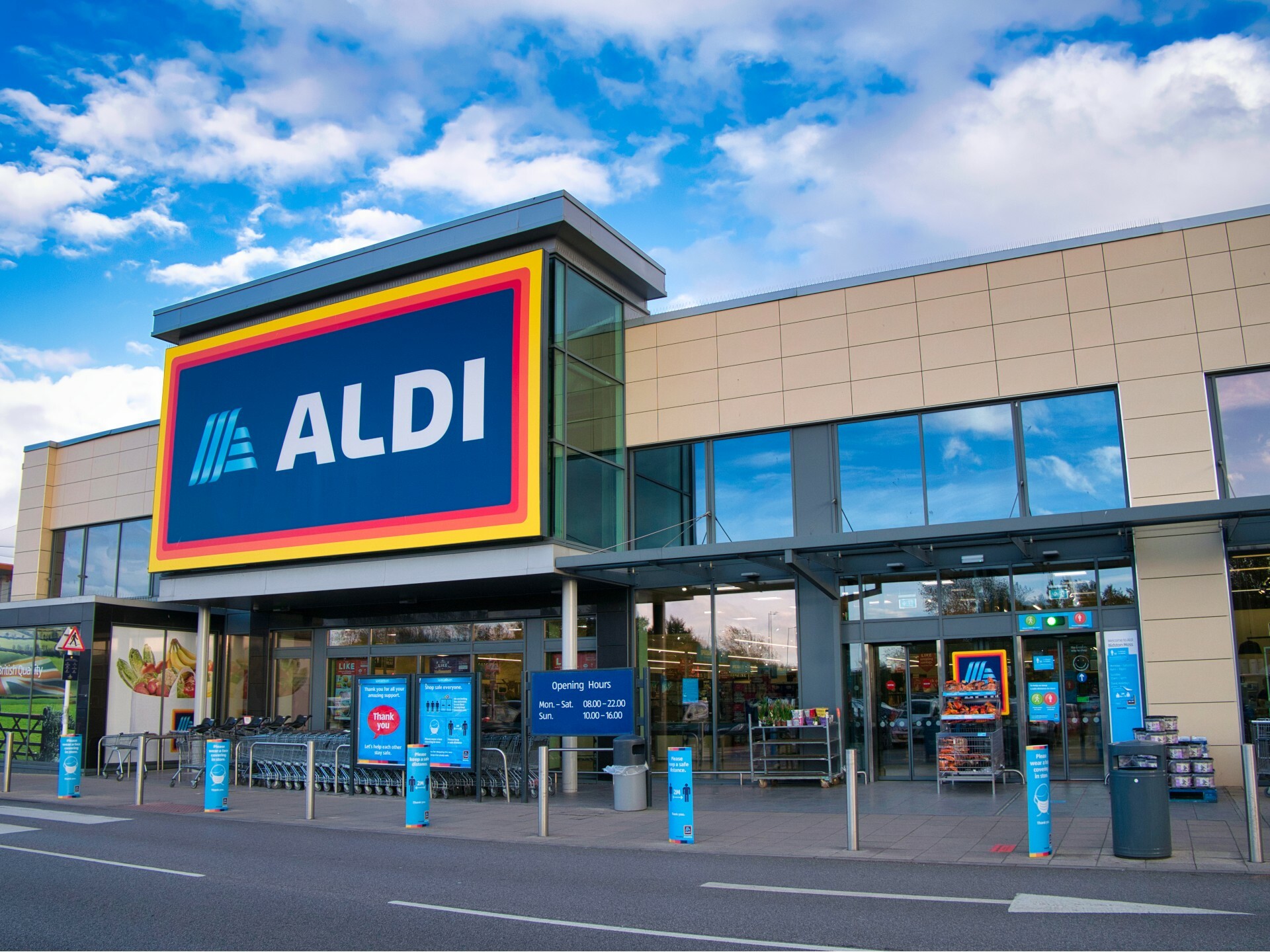Aldi’s New Store Openings: What Footfall Data Reveals About Their Locations

Supermarket giant Aldi has been making headlines by opening 11 new stores across the UK in time for Christmas. The openings form part of Aldi’s ambitious plan to hit 1,500 stores nationwide and invest £800 million in expanding its footprint. With sites ranging from busy retail parks to smaller towns, the question arises: do the footfall trends in these areas justify Aldi’s investment? And what does this mean for the local economies and retail landscapes?
We’ve paired Huq’s footfall insights with Aldi’s new locations to assess whether these sites are strategically positioned to capitalise on strong visitor trends.
Sedgley, West Midlands: Consistent Footfall Growth
Footfall Data:
- November 2024: 376,219 total visitors
- Year-to-date 2024: 4,226,920 total visitors
- 2023 Total: 4,808,533 visitors
Sedgley, a small West Midlands town, continues to attract consistent footfall. While the 2024 year-to-date figures indicate a slight year-on-year decrease, monthly totals remain strong, positioning Aldi’s new store to serve an engaged local population. The opening aligns with Sedgley’s robust visitor patterns, ensuring the new store will benefit from steady demand, particularly during the festive season.
Tanbridge Retail Park, Horsham: Sustained Retail Demand
Footfall Data:
- November 2024 Weekly Average: 260,444 visitors
- Year-to-date 2024 Weekly Average: 232,382 visitors
- 2023 Weekly Average: 235,806 visitors
Tanbridge Retail Park in Horsham, West Sussex, has maintained impressive visitor levels over the past year. Despite slight dips, the weekly averages in November show an increase above year-to-date figures. Aldi’s presence here is a strategic move to capture consistent footfall in an already busy retail destination. For local retailers, Aldi’s entry could drive even more traffic, enhancing the site’s attractiveness for shoppers.
Straiton Road, Loanhead: Rapid Growth and Peak Potential
Footfall Data:
- November 2024 Total: 1,096,962 visitors
- YTD 2024 Weekly Average: 194,709 visitors
- 2023 Weekly Average: 196,439 visitors
Loanhead’s Straiton Road location boasts significant footfall growth, with November’s weekly average spiking to 255,958, well above the year-to-date average. This strong performance highlights the area’s growing appeal as a retail hub. Aldi’s decision to open here is well-timed, as increasing visitor numbers suggest rising consumer demand and significant sales opportunities during the holiday rush.
Cribbs Causeway, Bristol: High-Traffic Powerhouse
Footfall Data:
- November 2024 Total: 1,545,366 visitors
- YTD 2024 Weekly Average: 336,134 visitors
- 2023 Weekly Average: 376,533 visitors
Cribbs Causeway is already a retail powerhouse, consistently delivering some of the highest footfall numbers in the UK. While year-to-date averages are slightly below 2023 levels, November’s figures show a notable increase, reaching an impressive 360,585 weekly visitors. Aldi’s new store will capitalise on this peak activity, offering an accessible and affordable option to the area’s already significant shopper base.
Ashton-in-Makerfield, Greater Manchester: Growing Local Demand
Footfall Data:
- November 2024 Weekly Average: 148,256 visitors
- YTD 2024 Weekly Average: 113,047 visitors
- 2023 Weekly Average: 94,140 visitors
Footfall in Ashton-in-Makerfield has seen steady growth throughout 2024, with weekly averages increasing from 94,140 in 2023 to 113,047 this year. November’s average climbed even higher, reflecting growing local demand. Aldi’s investment in this location is a clear bet on the area’s upward trend and will provide residents with increased convenience and affordability.
Duff Street, Macduff, Banffshire: Transforming Small-Town Retail
Footfall Data:
- September 2024 Total: 409,931 visitors
- YTD 2024 Weekly Average: 106,807 visitors (up from 100,545 in 2023)
In smaller towns like Macduff, Aldi’s opening could have a transformative effect on local retail dynamics. Footfall figures show a steady increase, particularly in 2024, with weekly averages climbing year-on-year. This investment not only supports Aldi’s mission to bring affordable food to underserved communities but also stimulates the local economy by driving increased traffic and consumer spending.
What This Means for Retailers and Local Economies
Aldi’s targeted approach to expansion reflects the brand’s ability to align with footfall trends and identify high-potential locations. In larger retail hubs like Cribbs Causeway and Loanhead, Aldi’s presence amplifies existing consumer traffic, while in smaller towns like Sedgley and Macduff, the supermarket acts as a key driver for economic activity.
For retailers and real estate professionals, these footfall trends underscore important opportunities:
- Increased Traffic: Aldi’s openings tend to boost overall footfall, benefiting nearby stores and services.
- Local Growth: In smaller areas, Aldi’s presence attracts visitors who might otherwise shop elsewhere.
- Investment Potential: Footfall trends highlight locations where demand is growing, making them attractive for further investment.
As we enter the busy Christmas period, Aldi’s strategic openings demonstrate the power of pairing data-driven decisions with consumer demand. For local businesses, retailers, and real estate stakeholders, these insights provide a roadmap for identifying the next big opportunities in UK retail.

